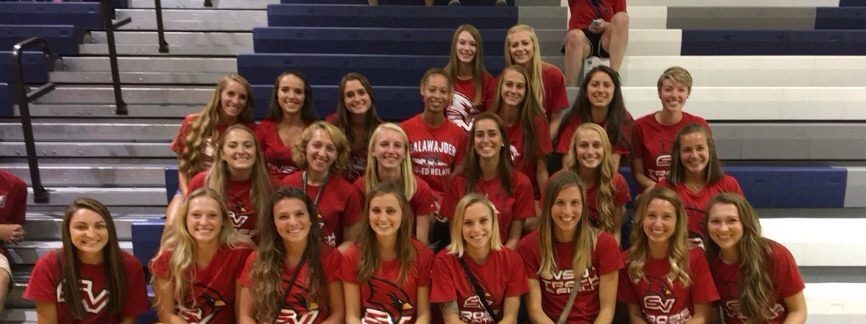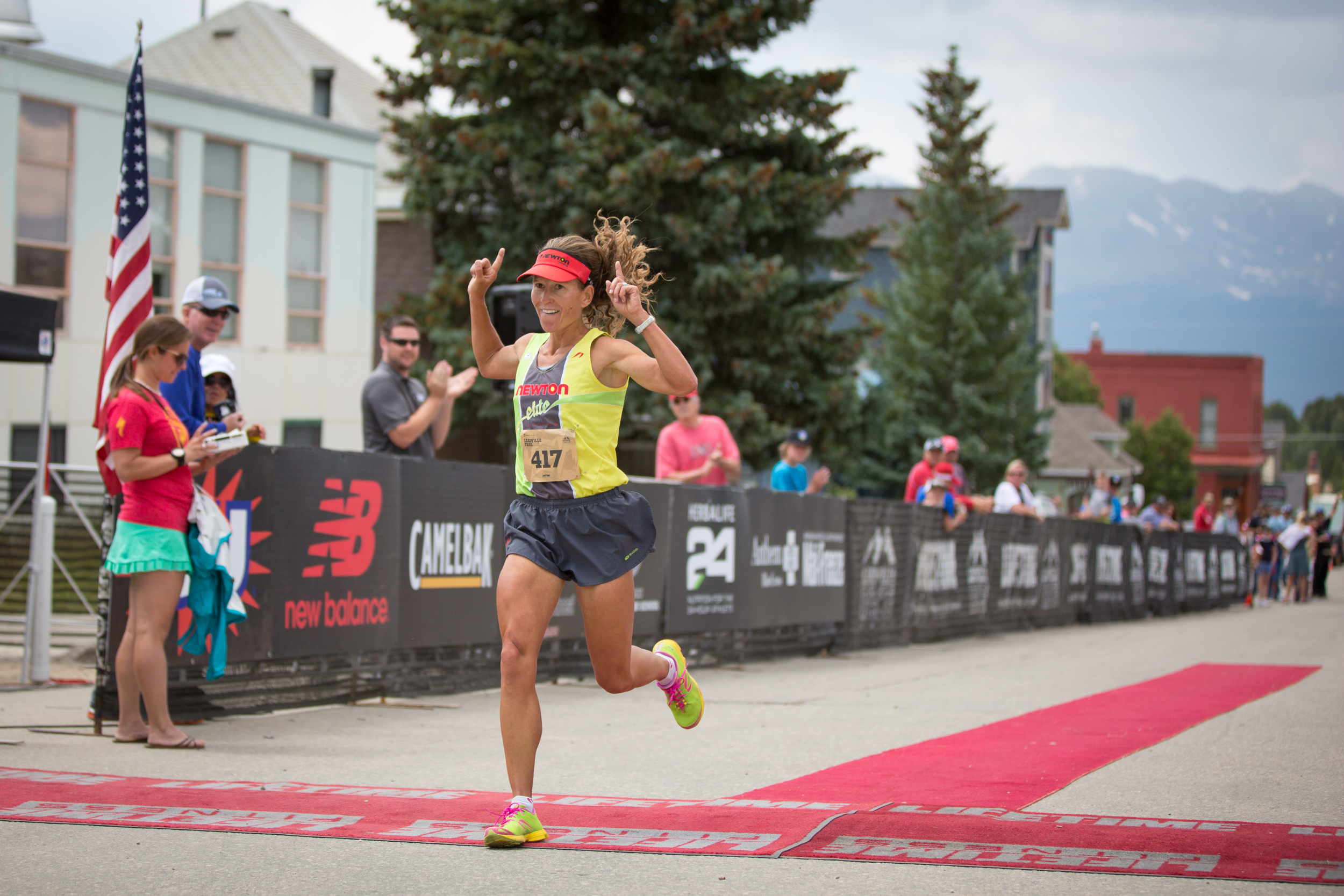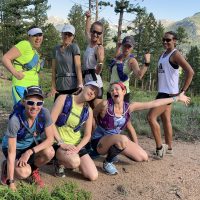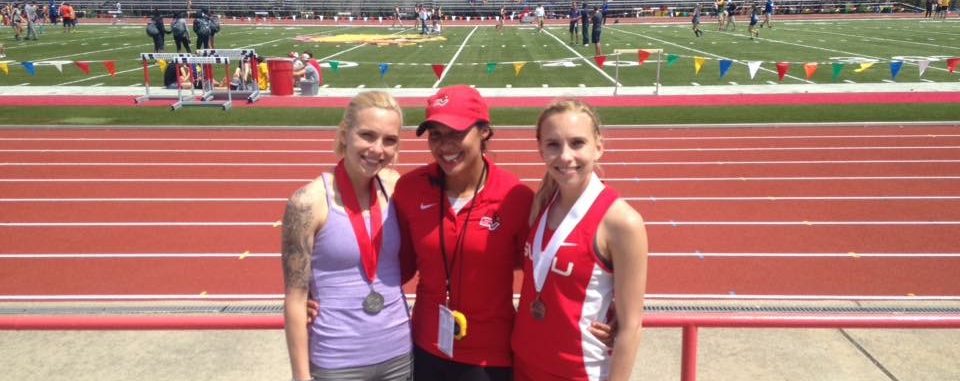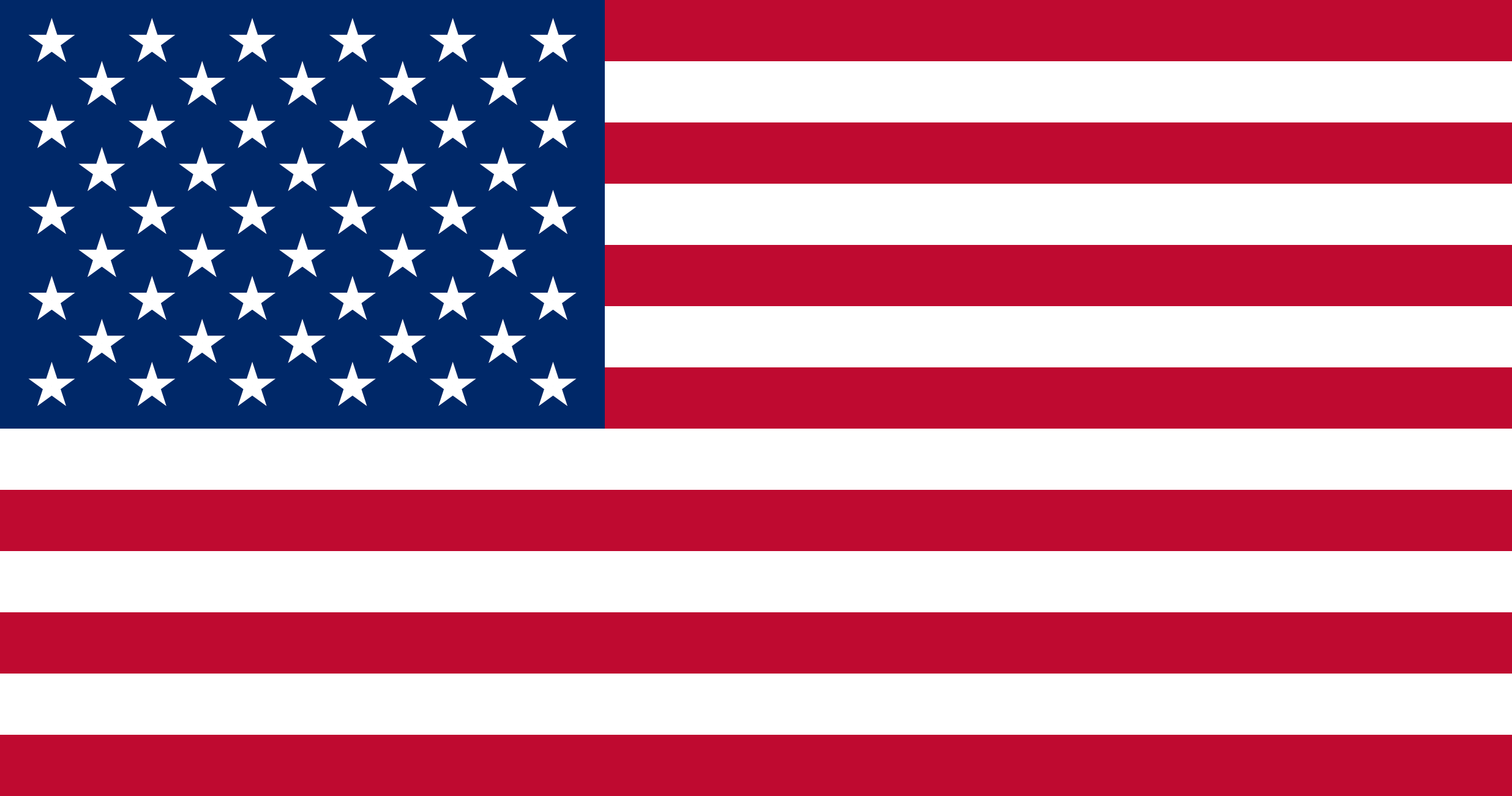This week we speak with Diana Norcross, a Boulder resident and member of Colorado’s Revolution Running Training Club, who managed to break down her running barriers by drawing upon the support and camaraderie she found in her local running group. Find out how Diana dealt with those early setbacks, achieved those PRs, and ended up running marathons for fun!
Can you tell us a little about your running background?
Up until March 2009 I had no running background. I ran my first 5K when I was in my early twenties, on a whim, with no training, and don’t remember much about it other than it seemed to be a really long way. When we moved to Boulder in August 2007, we heard about this cool 10K race that everybody did, so we “trained” on our own and ran our first BolderBoulder in 2008. I met my goal, which was to run the whole way, and finished in 1:30.
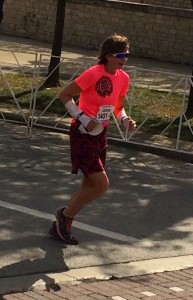 You started training with Revolution Running in 2009. Do you recall what was it that made you start with this training group?
You started training with Revolution Running in 2009. Do you recall what was it that made you start with this training group?
When March 2009 came around, my husband and I knew we wanted to run the BolderBoulder for a second time, and we knew we wanted to improve our times, but I kept discovering reasons to not leave the house and go train. It was windy, or it was cold, or I put it off until there wasn’t enough time. It was when I decided I simply HAD to clean the kitchen floor instead of go out and run that I knew I needed help, so I looked on the BolderBoulder website and found the Bold Running training group, now called Revolution Running, and joined.
I vividly remember your first training session with Revolution Running, and how disappointed you were that you had chosen a pace group that, at that stage, was too fast for you. Can you recall what was going through your mind that morning, and how you turned around all those negative thoughts and feelings you experienced?
When I joined the training group, I kind of liked the idea of running a 10K in one hour. If successful, I would shave 30 minutes off my time, and I was such a newbie to running I thought the goal was completely doable. After all, I had two speeds—running and not running—and utilizing those two speeds I could sustain a workout for a whole twenty minutes. I was ready to go!
Suffice to say, that first training session was a real eye-opener. I mean, I got to experience it all: the gasping, completely out-of-breath dying sensation, the dismay as I watched everyone else in my group disappear into the distance, utter despair at my body’s total inability to do ANYthing I asked of it, and the final humiliation of rejoining my pace group and receiving one of the most heart-warming pity claps ever. But I also got a glimpse of what could be possible, physically, if I kept at it, and most important of all I received encouragement from absolutely everyone, especially one extraordinary coach!
That first day was tough, but I didn’t hit my lowest point until weeks later when I ran kilometer repeats for the first time in my life and broke down sobbing because I simply couldn’t do them. I think that is the worst thing, really, when you let yourself down, when you end up disappointing yourself.
In moments of weakness it’s easy to get defensive, I mean, we have a massive urge to protect against the shredding of self-esteem (I am such a failure), and pride (Everyone knows I’m a failure). It becomes crucial in those moments to have other people around you who are supportive and understanding and encouraging, and it’s also important that you allow yourself to be helped.
For me, getting past the negative thoughts and feelings meant not merely listening, but believing my coach when he said everyone went through days like that. It meant not hiding in the parking lot, but sharing my disappointment with the entire pace group, who circled up into the most extraordinary group hug. And it meant admitting I had made a mistake in my race goal, and being flexible enough to revise that goal to something I COULD accomplish. I changed pace groups and ran a 1:15 BolderBoulder that year. (It would be 2012 before I finally got close to my original mark and ran a 59:26.)
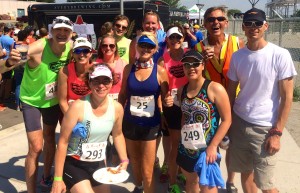 You have made huge progress as a runner over the last seven years with Revolution Running. What has been the biggest difference that being part of this training group has made for you?
You have made huge progress as a runner over the last seven years with Revolution Running. What has been the biggest difference that being part of this training group has made for you?
Apart from the structure of the program, the workouts themselves (long run, tempo, hills, intervals) and the way they are scheduled to promote an increase in speed and fitness, or to prepare for a goal race, the biggest difference in being a part of Revolution Running is getting to share in the pursuit of excellence. We are a disparate group of people—all ages, all fitness levels, all backgrounds, politics, religion, life experiences, all different—yet we all want the same thing: to get better at running.
And each individual in the group gets to decide what “getting better” looks like. It could be a new PR, or racing a different distance, or being out there for thirty minutes instead of twenty, or not sucking at kilometer repeats. The training group embraces all definitions of excellence.
The sharing part, however, is what makes Revolution Running truly unique. You make friends, and yes, they hold you accountable, so when you miss a practice because you had to clean your kitchen floor, your friends will raise an eyebrow and say, “Oh Really.”
But most days are simply this amazing shared experience.
You show up, get in your group, say hello, and start running, and maybe you didn’t sleep well, or your foot is sore, or maybe you feel amazing because you opened a jar of pickles first try without whacking at it under the kitchen faucet. Whatever it is, you set it aside, because you’re with your friends and you’re all running. You have a coach with you, too, whose primary function is to help you have a satisfying workout.
Fifteen minutes in, you start working harder, gasping maybe, struggling at the back, or flying easily at the front. Another fifteen minutes and sweat drips and layers come off—ooh, that’s a nice top, where’d you get that—and then Coach suggests another repeat. There’s a collective groan, and someone mutters, “Oh come on,” and everyone picks it up and gets it done, and it’s time to punch the air in triumph. This is where you start to smile, because most likely you wouldn’t have done an extra repeat on your own, and even if you had, there wouldn’t have been anyone to high five afterward, and while we’d all like to dance like Rocky at the top of the steps, let’s face it—it’s more fun celebrating with other people.
Then it’s an easy cool down back to the parking lot, circle up and stretch (aaagh—my quads, my calves—blargh), then “See you later”, home, shower, and on to the next thing, and the whole time you’re riding this amazing high because you did something challenging, along with other people, all striving together.
What are some of your highlights and personal records along the way, and did you ever think that you would reach the level of running that you now have?
Last question first: no, I never thought I’d reach this current level of running. I’m running marathons now, and doing track workouts for speed. A five mile run is nothing. I went from dying during a twenty minute workout, to running for four and a half hours. It’s insane.
Highlights always include sitting in Folsom Field after the BolderBoulder with my Revolution Running peeps, exchanging race stories and watching the memorial show. Another highlight, kind of a weird one, was after my first marathon in Victoria, BC (5:30 and change), when I crossed the finish line and a volunteer gave me a hug. Her shoulder was right there in front of my face, so I decided I should have a brief cry, and then she offered me a cookie. The race was over and I wasn’t running any more, I had had a cry, and a hug, and a cookie, and I’d finished my first marathon, so all was suddenly right with the world! (Then I went back to the hotel and had my first ice bath. Ugh!)
Apart from breaking the one hour mark at the BolderBoulder, my favorite PR is my most recent marathon, in Columbus, OH, the only time I’ve been able to “race” a marathon. I kept a steady pace throughout (flat course really helped with that), with a single second difference between the first and second half, shaved almost three minutes off my time, and stayed strong and positive throughout. I did a lot of mental preparation for that marathon, and it paid off beautifully!
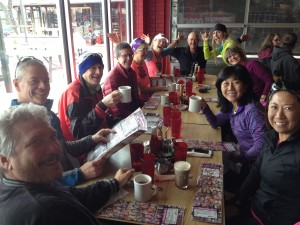 You’re a big socialite at many of the Revolution Running gatherings. How important is the social side of Revolution Running to your continued engagement and enjoyment of the club and the training it provides?
You’re a big socialite at many of the Revolution Running gatherings. How important is the social side of Revolution Running to your continued engagement and enjoyment of the club and the training it provides?
So, back when we first started with the training club, there wasn’t as much of the social side as there is now. We would arrive at the training venue, do the workout, chat a little while we were stretching afterward, and go home. I’m not certain how the whole “Let’s go for coffee” thing got started; probably we hung around in the parking lot gabbing for so long that people who had missed their morning coffee needed a fix.
But we simply didn’t want to stop talking, and what we talked most about was running: our own running, other people’s running, races we wanted to run, places we wanted to travel to and run in, hydrating and fueling and recovering, muscles and running, stomachs and running, shoes and gear, PRs and epic fails, elites, crazy running events, and on and on and on and on… And apart from the obvious common thread, which is, you know, running, we found more to share, such as families and work and hopes and dreams and challenges—the stuff of life! The social aspect of this training group is a marvelous perk!
Will we see you running on trails again in the near future?
Hah! Trails and I have a mixed history, as you know. I love the idea of them. My friends run on trails and tell enticing stories. They post stunning pictures. But I’m a real weenie about wild animals, you know, to the point where I sing at the top of my lungs to warn them I’m coming. Also, I still have a lot of work to do to improve my running form, and I feel I can do a better job of that on roads. Trails make you strong, though, so maybe I do have more of them in my future.
What does the future have in store for you, and do you have any running goals for the next 12 months?
My running goals for the next 12 months include breaking 8 minutes for the mile, breaking two hours for the half, and running the Boston Marathon. I didn’t qualify for that last one, but my husband did, and I’m hoping to raise money and run for a charity so he and I can share that event, as we have shared so many others.
If someone was thinking of joining a running club like Revolution Running, what would you say to them if they’re not sure if it might fit for them?
It IS the right fit for you. You don’t have to be a runner to join a running club. You don’t have to look like a runner or talk like a runner—you don’t even have to enjoy running. Running can be really effortful, and it’s normal to feel like you’re at your limit.
It’s also normal to look at other runners and measure yourself against them, which apart from being unfair to yourself, is one of the quickest ways to sabotage your efforts. The people you see, whom you think are waltzing through their workouts, have been running for longer than you. Bodies undergo incredible—INCREDIBLE—changes over time, but they only undergo these changes OVER TIME. Once you join a running club you will see immediate benefits, and the longer you stick with it, the more benefits you will see.
Remember, we are all pursuing excellence, however we define it.
All you need is the desire to try something different, and the courage to join other people and share the journey. If you can do that, the rewards will be off the charts insane.
Terry provides positive coaching sessions for clients, working with athletes to enable a positive focus on their status and goals. He can also create personalized guided imagery sessions for clients, delivered as an mp3 audio file that you can listen to on multiple devices.
activacuity provides a daily dose of positive guided imagery or visualization sessions. Find out what you can do when you make that mind-body connection – check out our subscription options here.


